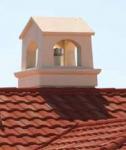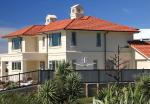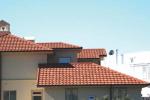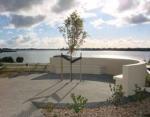French Influence
FRENCH INFLUENCE
John Killeen, a 5th generation New Zealander, has a dry sense of humour gleaned from years of experience. It is reasonable to say he has worked hard for what he has and has developed a knack of seeing through much of the information we are bombarded with.
His father was a carpenter and he worked with him on site from the age of 14 in Southland. This grounding provided John with a valuable insight into the building industry even before leaving school at 15 to find his own way in the world.
His rich and varied life story saw him employed as a Butcher, Shearer, Clerk, Sales Person and Administration Manager. He also worked on the Deep Cove tunnel and served as a Bombardier in Vietnam in 1967.
John relates with a chuckle, “You know I was of an era, when I started work, where it was “OK” for Whitcoulls to run an employment advertisement stating that ‘Catholics need not apply’. Times have changed a bit since then!”
John married his wife Loma in 1970 and they purchased their first house in Papakura for $14,000.
John met builder, Gerald Muir, whilst he was doing alterations on a neighbour’s property in Manurewa. “Gerald’s high standard of craftsmanship impressed me at the time and I decided then, that if I ever built a new home, Gerald would be the person to do the job. This is a decision I have no regrets about as he has done an exceptional job for us. He has had considerable input into our new home from the planning to the final details. Brilliant!”
Gerald Muir then referred John to architectural designer Darren Chalmers, to help him design his “dream home” in the Karaka Harbourside Estate. The site is
situated at the end of a cul-de-sac on the waterfront with fabulous inner harbour views.
John’s architectural preferences were heavily influenced by his travels in the south of France, as a young man, and the design of the Portofino Point harbourside property reflects this. He was originally planning to build a French Chateaux style house however after considerable consultation with Darren they settled on an Italian “Tuscan style” as a result of council height restrictions. Having settled on a design and a list of “must haves”, the main requirement was that the house was to have classic and ageless aesthetic appeal and the views of the inner harbour were to be maximized. The French influence was a given.
As the house was orientated towards the harbour views it effectively turns its back to its closest neighbour. The twostoried family home, clad in plastered brickwork, consists of a series of simple, dedicated spaces that enclose rooms and covered terraces. The kitchen, dining, family, formal lounge, guest accommodation and utilities occupy the lower level. Upstairs has dual master bedrooms with individual ensuites. Generous glazing on the sunny northwestern side positions living areas and bedrooms to maximise views of the sea and sunshine.
Due to limited vehicle manoeuvrability on site a drive through garage was provided for additional onsite parking. The eastern side of the house that faces
the street features a mix of hip and high gable roofs, long narrow windows, painted timber detailing to soffits and plastered bell towers give an authentic European appearance. Complementing this is the Metrotile Roman roof that forms a significant part of the overall character of the home. A circular window highlighted by red brick defines the entryway that leads into a double storied light filled entrance gallery with a tower staircase and wrought iron balcony. Access to the first floor can also be via a Magic Carpet Lift. The entrance gallery leads into an area that accommodates the family room, kitchen and dining. A modern gas fire adds warmth. To maximize views the family room and the kitchen are located towards the sea. Wide sliding doors provide access to a covered terrace that features overhead glazing and opens to the distinctive landscaping features. An additional covered terrace accessed from the dining room provides a location to shelter from occasional sharp westerly winds from the inner harbour. A separate formal lounge creates a private retreat.
The irregular shaped site presented some challenging design issues with positioning of the house due to height in relation to boundary controls, and the coastal setback requirement. These issues where all resolved through the Resource Consent process.
Having settled upon the design of the house John and Gerald undertook a review of a wide range of tile roofing products. Due to the location of the house, which overlooks the Pahurehure Inlet, John was advised by Gerald to specify a lightweight roof due to structural cost savings and reduced maintenance concerns.
John undertook an internet search and after considerable research, on all products available, chose the Metrotile Roman tile profile from the range of alternatives due to its authentic “clay tile” look and marine warranty performance. John then visited the Metrotile factory and was provided with samples and a list of addresses by Ian Ross, a then Director and owner of the Company, to undertake a drive-by prior to specifying the Metrotile Roman tile on his Portofino Point Harbourside property.
Gerald Muir has been building for some 40 years and has built up a boutique building company that specializes in quality of its workmanship, industry expertise and client relationships.
Gerald spent some 18 months working with John on a range of Design and Resource Consent issues prior to commencing construction of the Portofino Point Harbourside property. Gerald noted that in some projects Resource Consent issues can account for up to 30% of the cost of a build.
Rob McMahon from Lightweight Roofing, who undertook the installation of the Metrotile Roman roof, was recommended to John by Gerald Muir. Gerald had a longstanding relationship with Rob McMahon and was very thorough in his management of each of the sub-trades, including Lightweight Roofing. John noted that Gerald had an apprentice spend a half-day spraying water on the roof, to check for leaks – and we are pleased to report that there were none.
TopLine Trade Services offer a wide range of plumbing, drainage, roofing and maintenance services and through the appointment of Rob McMahon, who has over 25
years of roofing experience and is responsible for their Residential Roofing division, are looking to offer homeowners, builders and commercial operators a complete roofing and maintenance “one stop shop” package in the greater Auckland area.
Darren L Chalmers Architectural Ltd
Darren established his practice in 1994 and is a professional member of the ADNZ (Architectural Designers of New Zealand Inc.) and is a Licensed Building Practitioner. He provides his clients with a range of architectural services from the initial consultation, through the design stages to consent application. He has been involved in a variety of developments including new residential houses, extensions, alterations, industrial and educational buildings. As can be





